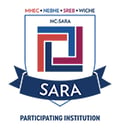 CHALLENGE
CHALLENGECareer and PROFESSIONAL Development
Social and Professional Media
Today there are a variety of social media outlets that you can use for professional and personal uses. Have you Googled yourself to find out what you are allowing others to see about you? You may have something set as public that you thought was private. Your friend may have mentioned you in a blog post without your knowledge. It is very important to have an understanding of these sites and follow best practices. Take a few minutes to read about the sites and corresponding tips.
Using LinkedIn
LinkedIn can house your public professional profile. When people want to check you out professionally, they Google you. What will come up at or near the top of the results is your LinkedIn profile. The profile can contain far more information than would typically be in a resume, including such things as an expanded summary and experience sections, volunteer experience, honors and organizations, courses, projects, recommendations, and the ability to link to your work products such as PowerPoint presentations, blogs or websites.
LinkedIn lets you maintain and expand your networking contacts easily in one place, and because LinkedIn is a "visible network" it allows participants to see who others are connected to. This feature facilitates networking conversations and network expansion.
LinkedIn can be used to research career options, employers of interest, and your connections to people or organizations. Use the Advanced Search function to find people doing the job you want in order to learn more about what they do and how they got there. Research and "follow" employers of interest. Use the 'How you're connected to...' function to discover connections to people or companies of interest.
LinkedIn allows participants to learn about or keep up with industry trends through participation in Groups. Being a member of a LinkedIn group enables you to directly email other group members and is great for networking or informational interview outreaches.
Job opportunities. LinkedIn enables you to learn about jobs through participation in Groups or through LinkedIn Jobs. Recruiters learn about you through your LinkedIn profile (they do keyword searches) or through your participation in Groups (recruiters look to these self-identified pools of experts for potential candidates).
To get started or update your LinkedIn page, start with:
How to take LinkedIn Headshots (TIPS)
Using Facebook
Facebook is a networking site that connects people with friends, family, companies, etc. People use Facebook to stay in touch and share updates such as photos, videos, and articles. There are a variety of privacy settings on Facebook, and you need to be aware how yours are set. You also need to answer the question, “Am I using this site for professional or social purposes?” If the answer is professional, make sure you read the following tips. You can also visit the Career and Personal Development Office for additional assistance.
- Adjust privacy settings to reflect who you want to be able to access your page.
- Showcase your skills through thoughtful status updates, sharing of articles, pictures and videos. Facebook does not have a character limit (unlike Twitter) but be mindful of how much followers are willing to read in one sitting.
- Include links to your professional materials such as your resume and blog.
- Be aware of who you are adding as a friend. If you do not want to be professionally associated with this person, add them to your personal account.
- Join professional groups and follow companies you have an interest in learning more about. If you are interested in working for Sprint, find their professional Facebook page and follow their updates.
- Try to stay away from adding junk and spam to your account. You want to market yourself as professionally as possible.
Using Twitter
Twitter is a networking site that allows users to send and read text-based posts. The posts can only be up to 140 characters in length. You can share original thoughts, retweet recently published articles, pictures, and text. Twitter has a faster-growing user base than Facebook, is user friendly, and offers a venue to demonstrate your expertise and share information quickly. Visit Twitter’s helppage for FAQs. You will need to answer the question, “Am I using this site for professional or social purposes?” If the answer is professional, make sure you read the following tips. You can also visit the Career and Personal Development Office for additional assistance.
- Select a professional Twitter handle (the username that will be public). You also have 160 characters to create a bio. The bio is a short introduction to your potential connections. Make sure to mention your skills, how you are unique, and a link to your blog or website.
- Adjust privacy settings to your preference.
- Include links to your professional materials such as your resume and blog.
- Keep your content active and current. The more often you tweet, retweet, reply, and participate in conversations, the more exposure you receive.
- Follow professionals such as CEOs, hiring managers, company accounts, etc. Twitter is used more often to post jobs.






